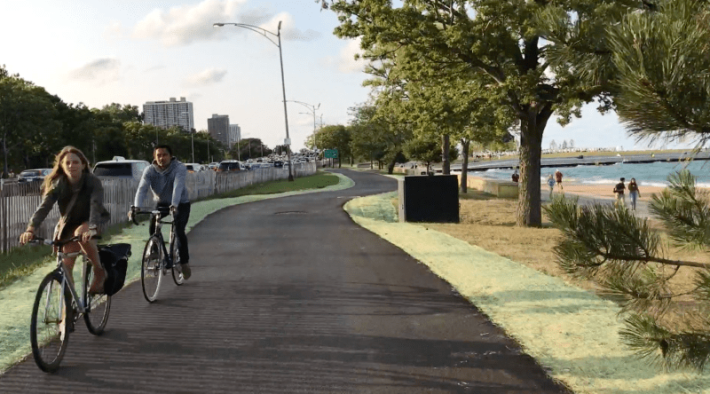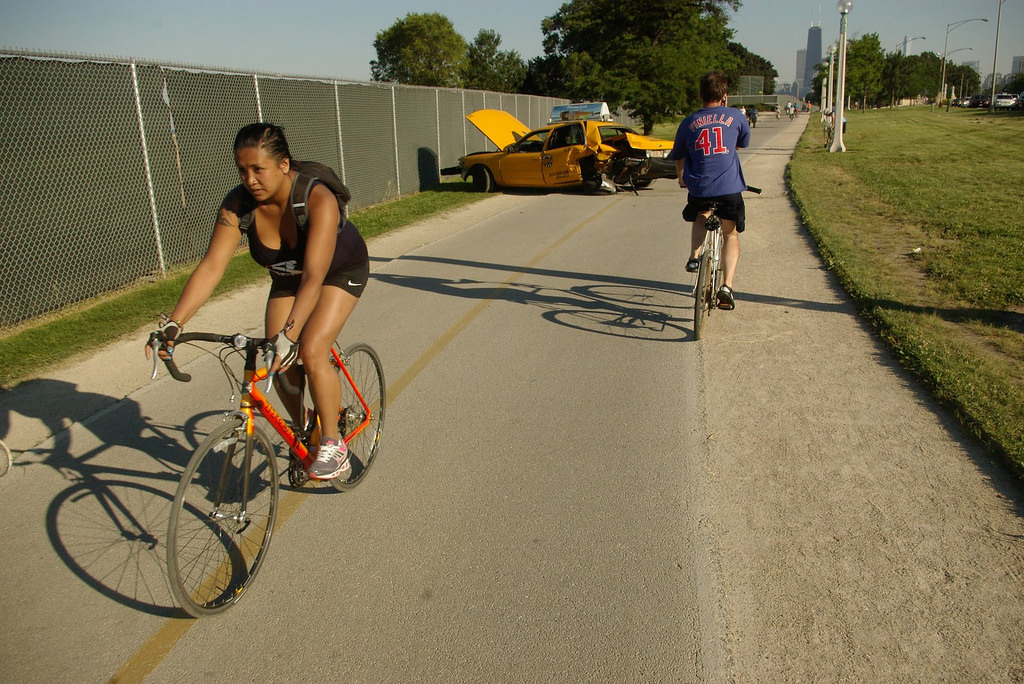On October 31, a man intentionally drove a rented a rented pick-up truck for about a mile on the busy Hudson River Greenway in Lower Manhattan, fatally striking eight trail users and injuring 11 others. It was the second time a driver weaponized his vehicle in New York City this year -- in May another motorist drove his car down a Times Square sidewalk, killing one person and injuring 22 others.
As I wrote shortly after the first attack, while local authorities should take sensible precautions to prevent vehicle attacks from happening in Chicago, everyday traffic violence is a much more pressing concern. In 2015, the latest year for which the Illinois Department of Transportation has released data, 119 people were killed in Chicago traffic crashes. Another 21,667 people were injured -- about 59 people a day. In contrast, there seems to have been few, if any, cases of motorists intentionally striking random people with their cars in our city.
The good news, as Streetsblog USA contributor Yonah Freemark noted in a recent New York Times op-ed, is that we can help prevent and mitigate vehicular homicides through the same urban planning strategies that can reduce the incidence of everyday traffic violence. The Times Square attacker came to a stop when he struck struck metal bollards. Retractable posts should be installed at the entrances of all bike/ped trails where it would otherwise be easy for motorists to intentionally or accidentally enter the path. Vehicle-resistant bollards, benches, planters, and the like should be installed on the perimeters of all popular pedestrian spaces, as is already the case at Chicago's Daley's Plaza, to block both reckless and murderous drivers from leaving the street.
Moreover, Freemark noted, we can make high-speed vehicle attacks more difficult through general strategies to deter speeding and make our streets more people-friendly. These include "road diets" that convert mixed-traffic lanes to space for pedestrians, transit, and bicyclists, as well as traffic-calming approaches like sidewalk bump-outs, speed bumps, speed feedback signs, traffic cameras, and more.
In the wake of the recent greenway attack, I've been asked if I believe pedestrians and cyclists are at risk of vehicle attacks on busy Chicago paths like the Lakefront Trail and the Bloomingdale Trail, aka The 606. All entrance ramps for the Bloomingdale have steel bollards to prevent entry by unauthorized drivers. But there have been cases of confused motorists wandering onto the Lakefront Trail and striking people, as well as drivers crashing onto the path from Lake Shore Drive, so more physical protection for trail users is needed.

That's especially true now that the Chicago Park District's project to separate pedestrian and bike traffic on the shoreline path is building new trails, usually for cyclists, closer to the highway. In some cases the new path is only a few feet from the high-speed roadway with no protection but a flimsy wooden snow fence. In recent weeks there have been two cases of motorists leaving the drive and crashing near the Lakefront Trail.
Fortunately advocates, including the Active Transportation Alliance and the Chicago Area Runners Association, have flagged the issue, and the Chicago Park District has promised to take action. As Active Trans reported last week, after meeting with the two advocacy groups, park district officials said they would try to get a guard rail installed wherever the path is within 30 feet of the drive.
The park district currently in talks with the Illinois Department of Transportation to identify a funding and installation strategy. How about hitting up hedge fund billionaire Ken Griffin, the guy who previously donated $12 million to make the separation project possible?
The bottom line is that while Chicago trail users shouldn't live in fear of an intentional vehicle attack happening on a local path, local authorities should do everything they can to prevent all types of traffic violence. That includes installing more physical protection for paths, as well as building more physically protected on-street bike lanes.
This post is made possible by a grant from Freeman Kevenides, a Chicago, Illinois personal injury law firm representing and advocating for bicyclists, pedestrians and vulnerable road users. The content belongs to Streetsblog Chicago, and Freeman Kevenides Law Firm neither endorses nor exercises editorial control over the content.






